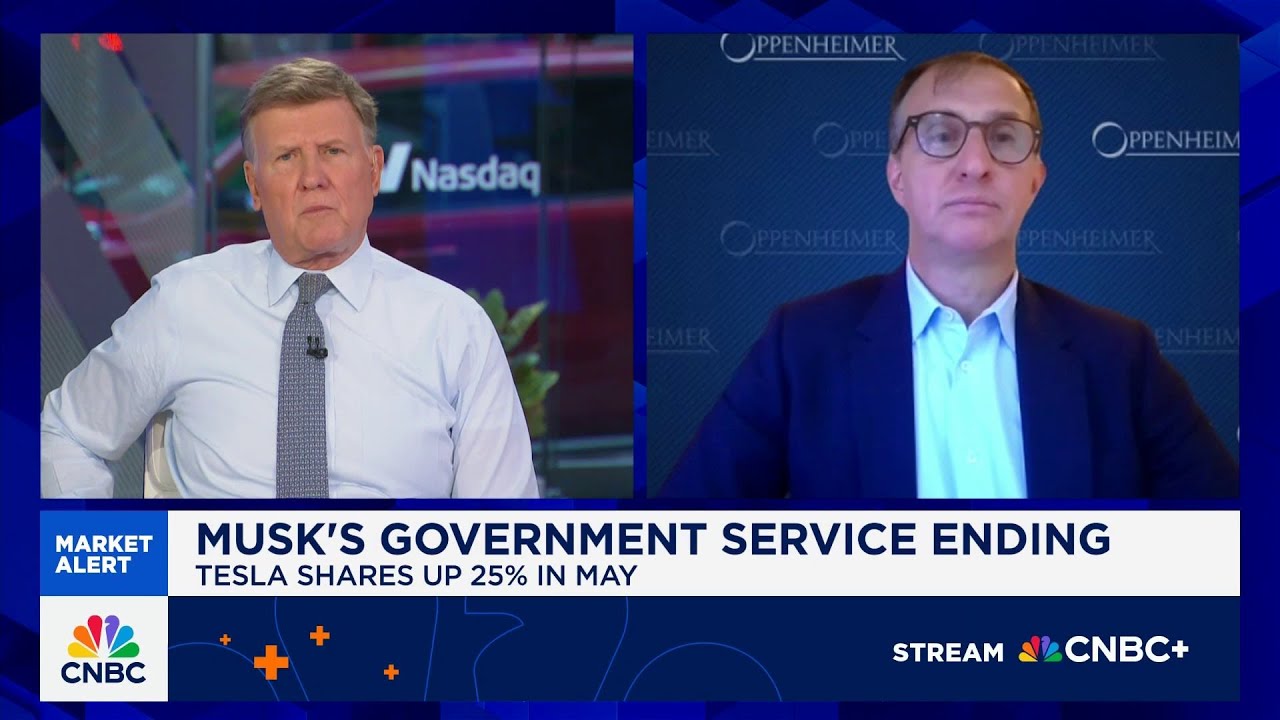Colin Rusch highlights that Tesla’s true value lies in its leadership in physical AI and autonomous vehicle technology, with upcoming robotaxi deployment being a key indicator of its future direction. Despite recent challenges in vehicle sales and political reputation, Tesla’s ability to achieve positive cash flow and innovate with new models will be critical for sustaining growth and investor confidence.
The video features Colin Rusch, a Senior Research Analyst at Oppenheimer, discussing Tesla’s recent stock performance and future prospects. Tesla’s shares have surged approximately 25% in the current month, with a one-year increase of over 103%, effectively doubling in value. However, since Elon Musk assumed a temporary government role, the stock has declined about 16%. Rusch emphasizes that much of Tesla’s current valuation is driven by its leadership in physical AI and autonomous vehicle technology, rather than traditional car sales.
A key focus is Tesla’s upcoming robotaxi launch scheduled for June 12th in Austin. Rusch highlights that this event represents the company’s future direction, with Tesla expected to deploy a modest fleet of autonomous vehicles on the road. The company aims to demonstrate its capabilities and gather valuable learning data from these vehicles in real-world conditions. The success and speed of this learning process will be critical in establishing Tesla’s leadership position in autonomous driving technology.
Regarding Tesla’s traditional business of vehicle deliveries, Rusch notes that recent performance has been disappointing. Nevertheless, he suggests that the primary investor benchmark now is whether Tesla remains cash flow positive. As long as the company can break even or generate positive cash flow, investors with confidence in Tesla’s technological potential are likely to stay engaged. Conversely, if Tesla begins to burn cash significantly, it could signal trouble and negatively impact its stock.
Rusch also discusses the impact of Elon Musk’s temporary role as a government employee on Tesla’s reputation. He believes that while some moderate political segments may overlook this period, there is lasting damage among certain groups, particularly on the political left. This damage could limit Tesla’s growth potential by restricting its market reach and brand perception. The era of Musk being universally respected across the political spectrum appears to be over, which may have long-term implications for the company’s expansion.
Finally, the analyst addresses Tesla’s future sales outlook and product development. He notes that recent product launches, such as the Model 3 and Model Y, have been underwhelming, and further improvements are needed. Tesla will likely require a significant refresh of its vehicle platform to boost sales and meet ambitious targets. While the company has the organizational capacity to make these improvements, the success of upcoming models and the ability to reduce costs will be crucial in driving future growth and maintaining investor confidence.
